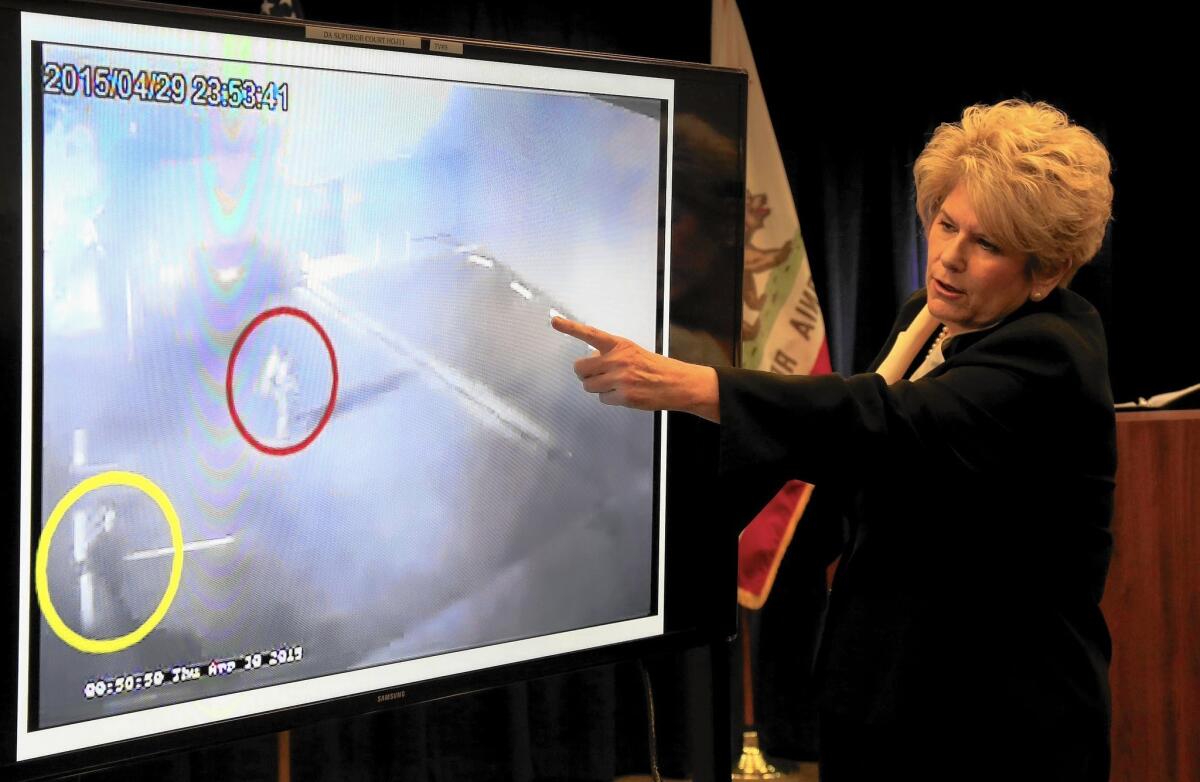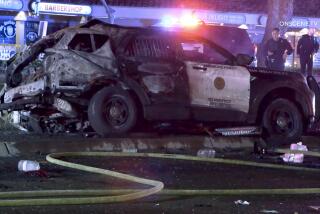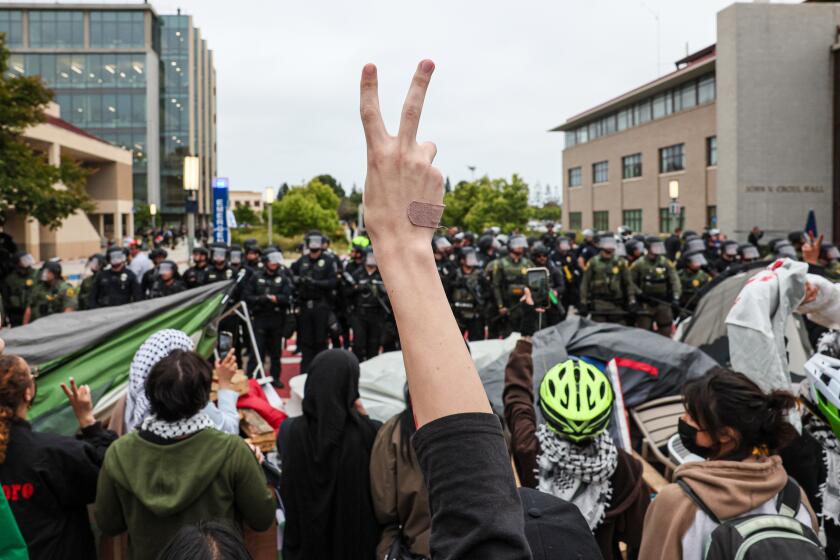In early statement on fatal shooting, San Diego officer said he didn’t see a weapon

San Diego County Dist. Atty. Bonnie Dumanis guides the media through a surveillance video showing the shooting of Fridoon Nehad by Officer Neal Browder.
Just hours after the fatal shooting of Fridoon Nehad in an alley in the Midway district, San Diego Police Officer Neal Browder told investigators he did not see any weapons on Nehad, according to a police statement released Wednesday.
But five days later, Browder told detectives in a formal, tape-recorded interview that when he first saw Nehad, he also saw a “metal object” in Nehad’s hand and believed it was a knife. He said in the interview that Nehad kept advancing — “aggressing my car,” as he put it — and he believed he was about to be stabbed.
The new details from the April 30 shooting are contained in reports released by lawyers for Nehad’s family, who are suing the city and Browder over the shooting.
On Tuesday, San Diego County Dist. Atty. Bonnie Dumanis released security video of the fatal confrontation. On Wednesday, the family released additional material from the police investigation plus the “raw video footage” of the shooting.
“The family is disappointed by D.A. Dumanis’ actions and her portrayal of the facts,” attorney Skip Miller said.
Dumanis concluded in November that the shooting was justified and that Browder, who is still on the force, would not face criminal charges.
Browder was responding to a radio call from workers at an adult bookstore who said a man armed with a knife was threatening people. When the officer arrived in his patrol car in an alley near Hancock Street, Nehad was walking toward the vehicle.
Browder told investigators that Nehad did not obey his commands to stop and that he was convinced Nehad would attack him. “There’s no doubt in my mind he was going to stab me,” the officer said in the recorded interview.
Days earlier, about three hours after the shooting, Browder did a walk-through of the scene with other officers, accompanied by a lawyer from the police officers union. Browder showed where he stopped his car and the direction in which he fired. He was then asked if he saw any weapons, and he said he had not. His attorney intervened and said Browder would not be answering any more questions.
On May 5, after viewing the security footage, Browder told detectives that when he pulled into the alley, Nehad was walking toward him “at a quick pace.” He was asked what he meant by “aggressing.”
“Aggressing is like he, he was focused,” Browder said. “It seemed like he was focused on me because as I’m watching him, he’s walking. He sees me and then he almost like literally turns toward the driver-side car door. And he’s like literally walking towards me. He’s walking at me. And what I mean by an aggressive manner, I mean the knife was still in his hands.”
The differences in what Browder said could be significant in the lawsuit, said Michael Crowley, a San Diego civil rights and criminal defense lawyer.
“His credibility is going to be paramount in the civil case,” Crowley said. “They are doing the walk-through, and, yes, he’s tired, and it’s soon after the incident. But something as fundamental as having a weapon? Then five days later he recollects seeing something. That is something a jury would be asked to decide if a person is credible or not.”
Police never found a knife. The object in Nehad’s hand turned out to be a blue pen.
Dumanis said that Nehad was 17 feet away from Browder when shot, but the family says that by the police department’s own estimate, he was 25 feet away.
The security camera footage was from a nearby business and is the only video record of events — even though Browder was wearing a body camera. The camera was not working; Browder told detectives that it had been malfunctioning for several weeks. He had returned it twice for repairs, and it had been given back to him two days before the shooting.
Browder said his normal practice was to turn on the camera when he got out of his car. But even if the camera had been working, Browder said, he didn’t have time to turn it on. The situation “was just so quick and so fluid, I just didn’t have a chance. I mean, that was the last thing I was thinking about.”
The department’s policy allowed officers to not turn on the camera if it couldn’t be done safely because of factors such as a sudden or unexpected confrontation. After the Nehad shooting, the policy was changed and now requires officers to activate the cameras before they arrive at a call.
Twitter: @gregmoran
Moran writes for the San Diego Union-Tribune.
More to Read
Sign up for Essential California
The most important California stories and recommendations in your inbox every morning.
You may occasionally receive promotional content from the Los Angeles Times.










